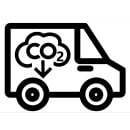In order to use this website you need to accept the use of Cookies , our Privacy Policy , and our Terms and Conditions.

Want access to a world of information? Join our Cannabis Growers Club! Here you will be able to learn more about growing cannabis as well as get some great tips and tricks from fellow growers to take your growing skills to the next level.
Take me to the Cannabis Growers Club of South Africa
Indoor growing has become increasingly popular. Grow tents are great tool for indoor gardeners to maximise space and give you the control to create a perfect growing environment for your plants. There are many models of grow tents available on the market, and they all come in different sizes. It can be confusing to know which one would be right for you. When choosing a grow tent there are a number of factors you need to keep in mind before making a decision. Size, material, style, type of growing system and the type of equipment you intend to use will influence your decision.
What to Look For in a Grow Tent
Where the physical tent is concerned, these are some general features to look out for when deciding on a grow tent.
Size and shape
Grow tents come in a variety of different shapes and sizes. The size and shape of the grow tent will depend on how many plants you want to grow, what type of equipment you will be installing and the size of the space you have available.
Points of access like reach in vs walk-in
Some grow tents are big enough to walk into. These tents are used to grow many plants as well as accommodate a lot of equipment like multiple lights and fans. Smaller tents do not allow you to do this and so the doors should open wide to allow you to easily access your plants for watering and feeding.
Maximum weight ratios for frame
Manufacturers will normally state the maximum weight that the frame can handle. This is important to check so that you can make sure the tent can properly hold the equipment you intend on using. Paying attention to the weight limit is most important when buying a larger tent as smaller tents already limit the size of what equipment can be installed. Larger tents have more space for equipment and so the risk of hanging too much weight on the frame is higher.
Reflective canvas thickness
The thicker the canvas the stronger the tent is. Tent thickness varies from 1680D canvas thread countdown to 210D. The D in the measurements stands for denier. This is the measure of the linear mass density of the fibres. All grow tents are light proof but those with a thicker material will resist wear and will be slightly more insulated for heat and noise. The interior inner reflective lining of the canvas helps to disperse light around the canopy of your plants.
Ducting ports, cord ports and vents
All grow tents are made with a number of different sized ports which growers can run ventilation ducting and electrical cords through. The best tents will offer dual-cinching ports which allow you to completely block out any light coming through the ports to ensure the tent remains light proof. Some tents also include various viewing windows and other mesh vents which can be useful for some growers. When choosing your grow tent it is important to check the placement and size of all the various ports to ensure your equipment can be properly installed in the arrangement you have in mind.
Zipper strength and quality
Most tents make use of large-gauge, heavy duty plastic zippers, but constant use in opening and closing the doors makes them a prime candidate for mishaps. Torn stitching and broken zippers can happen even in high quality tents but can be avoided with proper care. Seam damage or tearing around the zipper can result from pulling too hard or just general wear and tear when a lower quality fabric is used. Manufacturers will sometimes double stitch their seams for added strength and to avoid zipper seams tearing. If a tent has this feature, it is a good indicator that it is a good quality tent.
Extra features
Some tents include a removable waterproof floor tray to collect water runoff from your plants. This can be a very useful and convenient feature as you won't need to worry about any water leaking onto your floor or carpets. Here is a quick checklist of features you will want to compare:
- Size and shape
- Access points: reach-in vs walk-in
- Maximum weight ratings for frames
- Interior lining reflectivity
- Light control features such as zipper covers and vent socks
- Location and number of air vents and intake/exhaust fans
- Puncture resistance and canvas density
- Zipper strength and quality
- Portability features like easy installation, knock-down and storage
- Extra accessories like removable floor trays, pouches, view ports, etc
What Size Grow Tent Do You Need?
The size of your tent will be one of the most important decisions you make. The selection of the tent will depend on multiple factors.
Space available
The first factor you will need to take into account is the space you have available. It is a good idea to measure the length, width and height of the space you want to set the tent up in. The tent should be slightly smaller than the space to allow you to easily setup and maintain.Number of plants you want to grow
Here is a general sizing guideline for how many plants you can grow:
|
Grow Tent Size (cm) |
Amount of plants |
|
80 x 80 x 180 |
2 - 4 plants |
|
100 x 100 x 200 |
2 - 4 plants |
|
120 x 120 x 200 |
4 - 6 plants |
|
240 x 120 x200 |
4 - 10 plants |
|
240 x 240 x 200 |
9 -16 plants |
|
300 x 300 x 220 |
12 - 18 plants |
The 100 x 100 x 200cm is ideal for new growers as you can start with smaller lights like CFL's and small LED lights and eventually upgrade all the way up to a 600 W MH/HPS lighting system. This tent can comfortably accommodate up to 4 plants.
For bigger growers, the 120 x 120 x 200 tent is a great choice as bigger lights can be used. It is big enough to double the yields but still small enough for one person to manage.
Grow equipment in tent
You will need to consider what type of equipment you would like to fit in the tent.
Choosing a bigger tent will allow for more equipment, however, if you choose an oversized tent, you could potentially end up paying more for your basic equipment as well as on the electricity your lights, fans and other equipment will use. On the other hand, if your tent is too small you could potentially overcrowd your plants, causing an unhealthy environment for them to grow in. You also may not be able to accommodate mature plants.
If you are a beginner grower it is best to start with a few plants as too many can be overwhelming. You can always expand at a later stage.
Type of system
The type of growing system you would like to use will also influence which grow tent to choose. Hydroponic systems can provide nutrients and water to more plants within a smaller space compared to soil-based systems. Plants don't need to compete for nutrients, so they are able to be placed closer together. With adequate lighting and good heat management and ventilation, a hydroponic set up can increase the number of plants a grow tent can accommodate.
Grow tent kits or mix and match
Indoor growing equipment like filters, lights and tents are designed to allow growers to mix and match the different components they need. No matter which size tent you buy, you will be able to find all the right equipment you need to create your set up.
To make things easier, many retailers offer grow kits or combos which include most, if not all, the components growers would need to get started. For beginners, a complete grow tent kit can eliminate the stress and take the guesswork out of choosing the right tent, lighting and other items.
Here is a quick checklist of features you will want to compare:
- Size and shape
- Access points: reach-in vs walk-in
- Maximum weight ratings for frames
- Interior lining reflectivity
- Light control features such as zipper covers and vent socks
- Location and number of air vents and intake/exhaust fans
- Puncture resistance and canvas density
- Zipper strength and quality
- Portability features like easy installation, knock-down and storage
- Extra accessories like removable floor trays, pouches, view ports, etc
Some Final Notes
Once you have taken all these factors into consideration, you'll be fully prepared to purchase the right grow tent to suit your grow.
A useful tip is to draw out your grow tent arrangement plan. Seeing it on paper can help you properly plan out how you want to set up your tent and the placement of each piece of equipment. This will help you when looking at different grow tents because you will be able to see if your arrangement will be suited for that specific grow tent. You can then make adjustments accordingly.


